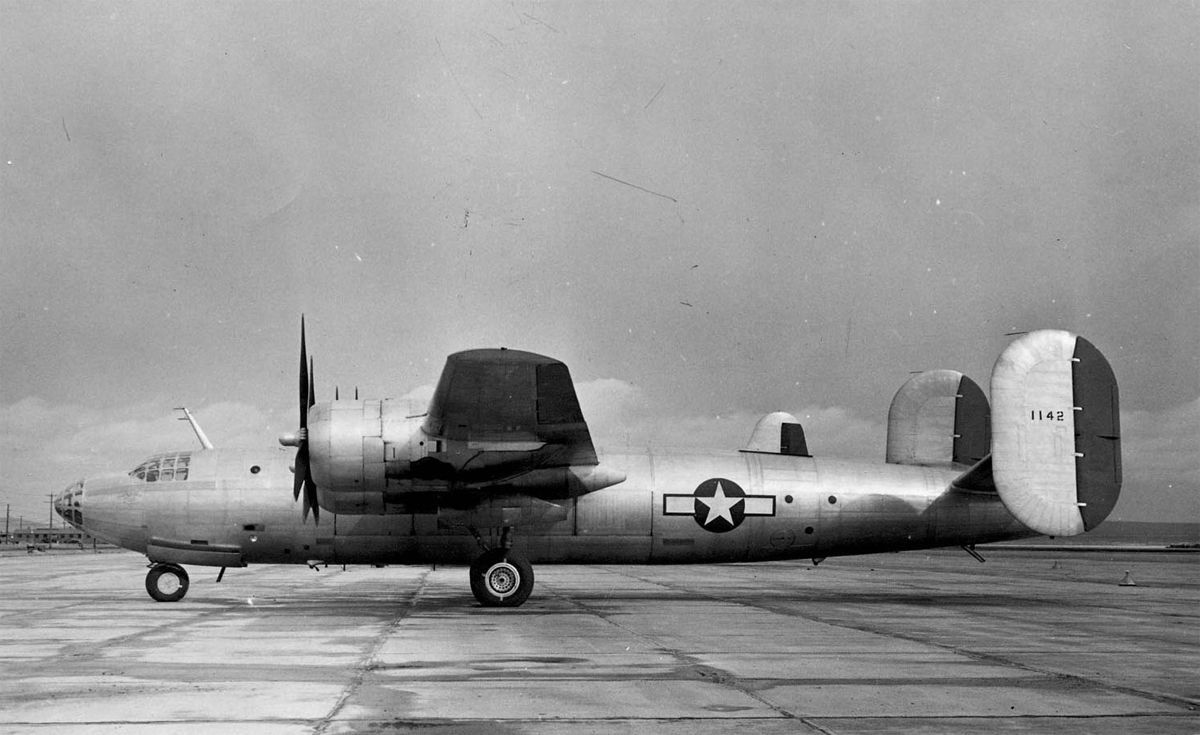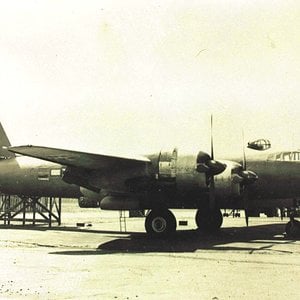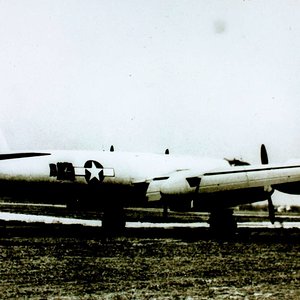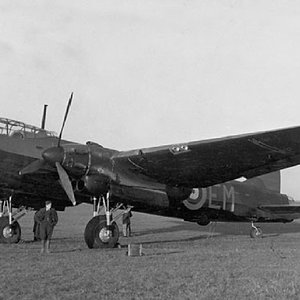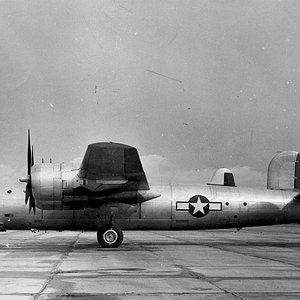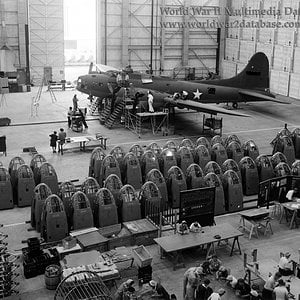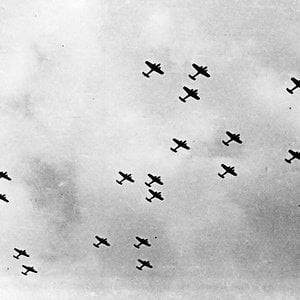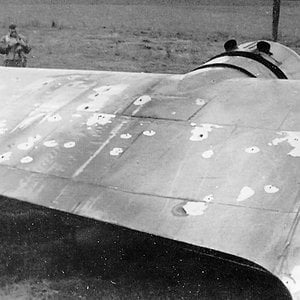Navigation
Install the app
How to install the app on iOS
Follow along with the video below to see how to install our site as a web app on your home screen.
Note: This feature may not be available in some browsers.
More options
You are using an out of date browser. It may not display this or other websites correctly.
You should upgrade or use an alternative browser.
You should upgrade or use an alternative browser.
Design and development
The engineering development of the B-29 had been underway since mid-1938 when, in June 1940, the US Army Air Corps requested a similar design from Consolidated Aircraft Company in case of development difficulties with the B-29.
The Consolidated Model 33 used to base its proposal was similar to the B-24 Liberator. Like the B-24 it was originally designed with twin fins and a large Davis-type wing, but with a longer, rounder fuselage and a rounded nose. The powerplants were to be four 2,200 horsepower (1,600 kW) Wright R-3350s, the same as specified for B-29s. The aircraft was designed to be pressurized, and have remote controlled retractable gun turrets with fourteen .50 in (12.7 mm) machine guns. It was to have an estimated gross weight of 101,000 lb (46,000 kg). The first contract for two XB-32s was signed on 6 September 1940, the same day as the contract for the Boeing prototype XB-29.
The first XB-32-CO, AAF s/n 41-141, was constructed next to the Army Air Forces (AAF) Base Tarrant Field Airdrome at the AAF Aircraft Plant No. 4 just west of Fort Worth, Texas along the south side of Lake Worth. The Consolidated Vultee Bomber Plant assembly line was six months behind schedule, making its first flight on 7 September 1942. Due to problems with the pressurization system, the gun turrets and landing gear doors, these items were omitted on the first prototype. The aircraft had R-3350-13 engines inboard and R-3350-21s outboard, with all four powerplants driving three-bladed propellers. The prototype was to have persistent problems with engine oil leaks and poor cooling. The B-29 had similar engine problems. The inboard propellers' pitch could be reversed to shorten the landing roll.[1]
The first XB-32 was armed with eight .50 in (12.7 mm) machine guns in dorsal and ventral turrets, and an odd combination of two .50 caliber and one 20 mm (0.787 in) cannon in each outboard engine nacelle firing rearwards, plus two .50 caliber machine guns in the wings outboard of the propellers.[2] The turrets were remotely controlled from periscopic sights in aiming stations inside the aircraft. The sights were coordinated by a sophisticated analog computer system developed by Sperry Gyroscope Company.
XB-32-CO 41-141 on 28 February 1944
On 17 March 1943, the initial contract was signed for 300 B-32-CFs but development problems continued. On 10 May 1943, the first XB-32 crashed on takeoff after making a total of 30 flights before the second XB-32, s/n 41-142, finally flew on 2 July 1943. This aircraft had a traditional stepped cockpit canopy. Upon examination and testing the USAAF recommended a large number of changes that included more conventional gun stations.
The pressurization system problems were never solved, and consequently the aircraft was re-purposed as a bomber to be operated at low and medium altitude; however, this decision only meant that it was easily eliminated from production aircraft. Problems with the remote controlled gun turrets were never solved and the armament on production aircraft was changed to 10 .50 caliber machine guns in manually operated turrets: Sperry A-17 turrets in the nose and tail, two Martin A-3F-A dorsal turrets, and one Sperry A-13-A ball turret. The bomb load was increased by 4,000 pounds (1,800 kg) to 20,000 pounds (9,100 kg).
The second XB-32 continued to have stability problems. In an attempt to resolve this a B-29 style tail was fitted to the aircraft after its 25th flight but this did not resolve the problem and a Consolidated-designed 19.5 ft (5.9 m) vertical tail was added and first flown on the third XB-32, s/n 41-18336 on 3 November 1943. The first production aircraft was fitted with a B-29 vertical tail until a new tail was substituted.
By 1944 testing of the three prototypes permitted the AAF to place orders for over 1,500 B-32s. The first production aircraft was delivered on 19 September 1944, by which time the B-29 was in combat in China. The first B-32 crashed on the same day it was delivered when the nose wheel collapsed on landing. Beginning on 27 January 1945, 40 B-32A-5, -10 and -15 aircraft were delivered as unarmed TB-32-CF crew trainers.
Originally, the Army Air Forces intended the B-32 as a "fallback" design to be used only if the B-29 program fell significantly behind in its development schedule. As development of the B-32 became seriously delayed this plan became unnecessary due to the success of the B-29. Initial plans to use the B-32 to supplement the B-29 in re-equipping B-17 and B-24 groups before redeployment of the Eighth and Fifteenth Air Forces to the Pacific were stymied when only five production models had been delivered by the end of 1944, by which time full B-29 operations were underway in the Twentieth Air Force.
Specifications (B-32)
Data from General Dynamics Aircraft and their Predecessors[11]
General characteristics
Crew: 10
Length: 82 ft 1 in (25.03 m)
Wingspan: 135 ft 0 in (41.16 m)
Height: 32 ft 2 in (9.81 m)
Wing area: 1,422 ft² (132.2 m²)
Empty weight: 60,278 lb (27,400 kg)
Loaded weight: 100,800 lb (45,800 kg)
Max. takeoff weight: 123,250lb (56,023 kg)
Powerplant: 4 × Wright R-3350-23A 18-cylinder air-cooled radial engine, 2,200 hp (1,641 kW) each
Performance
Maximum speed: 357 mph (310 knots, 575 km/h) at 30,000 ft (9,150 m)
Cruise speed: 290 mph[12] (252 knots, 467 km/h)
Range: 3,800 mi (3,304 nmi, 6,118 km)
Service ceiling: 30,700 ft[12] (9,360 m)
Rate of climb: 1,050 ft/min (5.3 m/s)
Armament
Guns: 10× .50 in (12.7 mm) machine guns
Bombs: 20,000 lb (9,100 kg)
The engineering development of the B-29 had been underway since mid-1938 when, in June 1940, the US Army Air Corps requested a similar design from Consolidated Aircraft Company in case of development difficulties with the B-29.
The Consolidated Model 33 used to base its proposal was similar to the B-24 Liberator. Like the B-24 it was originally designed with twin fins and a large Davis-type wing, but with a longer, rounder fuselage and a rounded nose. The powerplants were to be four 2,200 horsepower (1,600 kW) Wright R-3350s, the same as specified for B-29s. The aircraft was designed to be pressurized, and have remote controlled retractable gun turrets with fourteen .50 in (12.7 mm) machine guns. It was to have an estimated gross weight of 101,000 lb (46,000 kg). The first contract for two XB-32s was signed on 6 September 1940, the same day as the contract for the Boeing prototype XB-29.
The first XB-32-CO, AAF s/n 41-141, was constructed next to the Army Air Forces (AAF) Base Tarrant Field Airdrome at the AAF Aircraft Plant No. 4 just west of Fort Worth, Texas along the south side of Lake Worth. The Consolidated Vultee Bomber Plant assembly line was six months behind schedule, making its first flight on 7 September 1942. Due to problems with the pressurization system, the gun turrets and landing gear doors, these items were omitted on the first prototype. The aircraft had R-3350-13 engines inboard and R-3350-21s outboard, with all four powerplants driving three-bladed propellers. The prototype was to have persistent problems with engine oil leaks and poor cooling. The B-29 had similar engine problems. The inboard propellers' pitch could be reversed to shorten the landing roll.[1]
The first XB-32 was armed with eight .50 in (12.7 mm) machine guns in dorsal and ventral turrets, and an odd combination of two .50 caliber and one 20 mm (0.787 in) cannon in each outboard engine nacelle firing rearwards, plus two .50 caliber machine guns in the wings outboard of the propellers.[2] The turrets were remotely controlled from periscopic sights in aiming stations inside the aircraft. The sights were coordinated by a sophisticated analog computer system developed by Sperry Gyroscope Company.
XB-32-CO 41-141 on 28 February 1944
On 17 March 1943, the initial contract was signed for 300 B-32-CFs but development problems continued. On 10 May 1943, the first XB-32 crashed on takeoff after making a total of 30 flights before the second XB-32, s/n 41-142, finally flew on 2 July 1943. This aircraft had a traditional stepped cockpit canopy. Upon examination and testing the USAAF recommended a large number of changes that included more conventional gun stations.
The pressurization system problems were never solved, and consequently the aircraft was re-purposed as a bomber to be operated at low and medium altitude; however, this decision only meant that it was easily eliminated from production aircraft. Problems with the remote controlled gun turrets were never solved and the armament on production aircraft was changed to 10 .50 caliber machine guns in manually operated turrets: Sperry A-17 turrets in the nose and tail, two Martin A-3F-A dorsal turrets, and one Sperry A-13-A ball turret. The bomb load was increased by 4,000 pounds (1,800 kg) to 20,000 pounds (9,100 kg).
The second XB-32 continued to have stability problems. In an attempt to resolve this a B-29 style tail was fitted to the aircraft after its 25th flight but this did not resolve the problem and a Consolidated-designed 19.5 ft (5.9 m) vertical tail was added and first flown on the third XB-32, s/n 41-18336 on 3 November 1943. The first production aircraft was fitted with a B-29 vertical tail until a new tail was substituted.
By 1944 testing of the three prototypes permitted the AAF to place orders for over 1,500 B-32s. The first production aircraft was delivered on 19 September 1944, by which time the B-29 was in combat in China. The first B-32 crashed on the same day it was delivered when the nose wheel collapsed on landing. Beginning on 27 January 1945, 40 B-32A-5, -10 and -15 aircraft were delivered as unarmed TB-32-CF crew trainers.
Originally, the Army Air Forces intended the B-32 as a "fallback" design to be used only if the B-29 program fell significantly behind in its development schedule. As development of the B-32 became seriously delayed this plan became unnecessary due to the success of the B-29. Initial plans to use the B-32 to supplement the B-29 in re-equipping B-17 and B-24 groups before redeployment of the Eighth and Fifteenth Air Forces to the Pacific were stymied when only five production models had been delivered by the end of 1944, by which time full B-29 operations were underway in the Twentieth Air Force.
Specifications (B-32)
Data from General Dynamics Aircraft and their Predecessors[11]
General characteristics
Crew: 10
Length: 82 ft 1 in (25.03 m)
Wingspan: 135 ft 0 in (41.16 m)
Height: 32 ft 2 in (9.81 m)
Wing area: 1,422 ft² (132.2 m²)
Empty weight: 60,278 lb (27,400 kg)
Loaded weight: 100,800 lb (45,800 kg)
Max. takeoff weight: 123,250lb (56,023 kg)
Powerplant: 4 × Wright R-3350-23A 18-cylinder air-cooled radial engine, 2,200 hp (1,641 kW) each
Performance
Maximum speed: 357 mph (310 knots, 575 km/h) at 30,000 ft (9,150 m)
Cruise speed: 290 mph[12] (252 knots, 467 km/h)
Range: 3,800 mi (3,304 nmi, 6,118 km)
Service ceiling: 30,700 ft[12] (9,360 m)
Rate of climb: 1,050 ft/min (5.3 m/s)
Armament
Guns: 10× .50 in (12.7 mm) machine guns
Bombs: 20,000 lb (9,100 kg)

